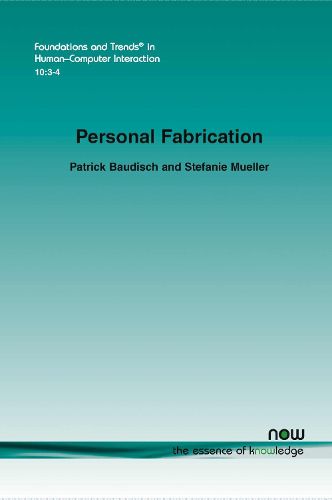Readings Newsletter
Become a Readings Member to make your shopping experience even easier.
Sign in or sign up for free!
You’re not far away from qualifying for FREE standard shipping within Australia
You’ve qualified for FREE standard shipping within Australia
The cart is loading…






This title is printed to order. This book may have been self-published. If so, we cannot guarantee the quality of the content. In the main most books will have gone through the editing process however some may not. We therefore suggest that you be aware of this before ordering this book. If in doubt check either the author or publisher’s details as we are unable to accept any returns unless they are faulty. Please contact us if you have any questions.
While fabrication technologies have been in use in industry for several decades, expiring patents have recently allowed the technology to spill over to technology-enthusiastic makers . The big question now is whether the technology will further progress towards consumers, which would allow the technology to scale from hundreds of thousands of users to hundreds of millions of users. Such a transition would enable consumers to use computing not just to process data, but physical matter. This holds the promise of democratizing a whole range of fields preoccupied with physical objects, from product design to interior design, to carpentry, and some areas of mechanical and structural engineering. Personal Fabrication analyzes similar trends in the history of computing that made the transition from industry to consumers, such as desktop publishing and home video editing, and comes to the conclusion that such a transition is likely. The analysis also reveals, however, that any transition to consumers first requires a hardware and software system that embodies the skills and expert knowledge that consumers lack. These are: (1) hardware and materials that allow fabricating the intended objects, (2) software that embodies domain knowledge, (3) software that embodies the know-how required to operate the machinery, and (4) software that provides immediate feedback and supports interactive exploration. At the same time, sustained success will only be possible if we also consider future implications, in particular (5) sustainability and (6) intellectual property. Personal Fabrication argues that researchers in HCI and computer graphics are well equipped to tackle these six challenges. It surveys the already existing work and derives an actionable research agenda. While the main focus is on human-computer interaction and computer graphics, it also includes selected works from adjacent fields such as mechanical engineering, material science, and robotics.
$9.00 standard shipping within Australia
FREE standard shipping within Australia for orders over $100.00
Express & International shipping calculated at checkout
This title is printed to order. This book may have been self-published. If so, we cannot guarantee the quality of the content. In the main most books will have gone through the editing process however some may not. We therefore suggest that you be aware of this before ordering this book. If in doubt check either the author or publisher’s details as we are unable to accept any returns unless they are faulty. Please contact us if you have any questions.
While fabrication technologies have been in use in industry for several decades, expiring patents have recently allowed the technology to spill over to technology-enthusiastic makers . The big question now is whether the technology will further progress towards consumers, which would allow the technology to scale from hundreds of thousands of users to hundreds of millions of users. Such a transition would enable consumers to use computing not just to process data, but physical matter. This holds the promise of democratizing a whole range of fields preoccupied with physical objects, from product design to interior design, to carpentry, and some areas of mechanical and structural engineering. Personal Fabrication analyzes similar trends in the history of computing that made the transition from industry to consumers, such as desktop publishing and home video editing, and comes to the conclusion that such a transition is likely. The analysis also reveals, however, that any transition to consumers first requires a hardware and software system that embodies the skills and expert knowledge that consumers lack. These are: (1) hardware and materials that allow fabricating the intended objects, (2) software that embodies domain knowledge, (3) software that embodies the know-how required to operate the machinery, and (4) software that provides immediate feedback and supports interactive exploration. At the same time, sustained success will only be possible if we also consider future implications, in particular (5) sustainability and (6) intellectual property. Personal Fabrication argues that researchers in HCI and computer graphics are well equipped to tackle these six challenges. It surveys the already existing work and derives an actionable research agenda. While the main focus is on human-computer interaction and computer graphics, it also includes selected works from adjacent fields such as mechanical engineering, material science, and robotics.